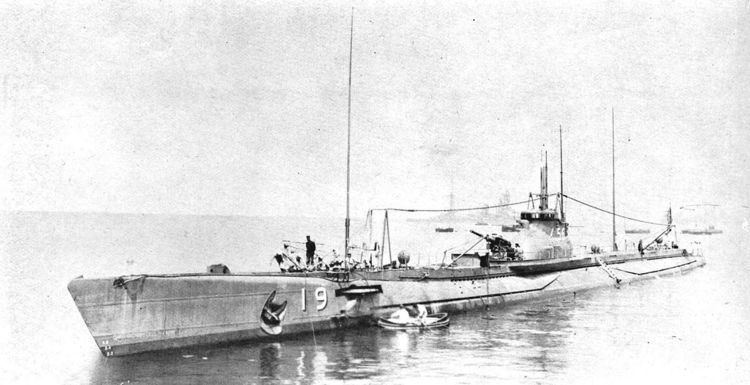Name I-60 Completed 24 December 1929 Launched 24 April 1929 | Laid down 10 October 1927 Construction started 10 October 1927 Length 101 m | |
 | ||
Fate Sunk by HMS Jupiter, 17 January 1942 Displacement 1,829 t (1,800 long tons) surfaced2,337 t (2,300 long tons) submerged | ||
The Japanese submarine I-60 was a Kaidai-class cruiser submarine of the KD3B sub-class built for the Imperial Japanese Navy (IJN) during the 1920s. The boat supported Japanese forces during the Dutch East Indies campaign in early 1942 until she was sunk by a British destroyer on 17 January.
Contents
Design and description
The submarines of the KD3B sub-class were essentially repeats of the preceding KD3A sub-class with minor modifications to improve seakeeping. They displaced 1,829 metric tons (1,800 long tons) surfaced and 2,337 metric tons (2,300 long tons) submerged. The submarines were 101 meters (331 ft 4 in) long, had a beam of 8 meters (26 ft 3 in) and a draft of 4.9 meters (16 ft 1 in). The boats had a diving depth of 60 m (200 ft) and a complement of 60 officers and crewmen.
For surface running, the boats were powered by two 3,400-brake-horsepower (2,535 kW) diesel engines, each driving one propeller shaft. When submerged each propeller was driven by a 900-horsepower (671 kW) electric motor. They could reach 20 knots (37 km/h; 23 mph) on the surface and 8 knots (15 km/h; 9.2 mph) underwater. On the surface, the KD3Bs had a range of 10,000 nautical miles (19,000 km; 12,000 mi) at 10 knots (19 km/h; 12 mph); submerged, they had a range of 90 nmi (170 km; 100 mi) at 3 knots (5.6 km/h; 3.5 mph).
The boats were armed with eight internal 53.3 cm (21.0 in) torpedo tubes, six in the bow and two in the stern. They carried one reload for each tube; a total of 16 torpedoes. The submarines were also armed with one 120 mm (4.7 in) deck gun for combat on the surface.
Construction and career
Built by the Sasebo Naval Arsenal, I-60 was laid down on 10 October 1927, launched on 24 April 1929 and completed on 25 December 1929. The boat was refitting in late 1941 and did not conduct her first war patrol until 10 January 1942 when she departed Davao City, the Philippines, to search for Allies ships south of the Sunda Strait. In the course of this mission, I-60 was sunk by the British destroyer HMS Jupiter.
